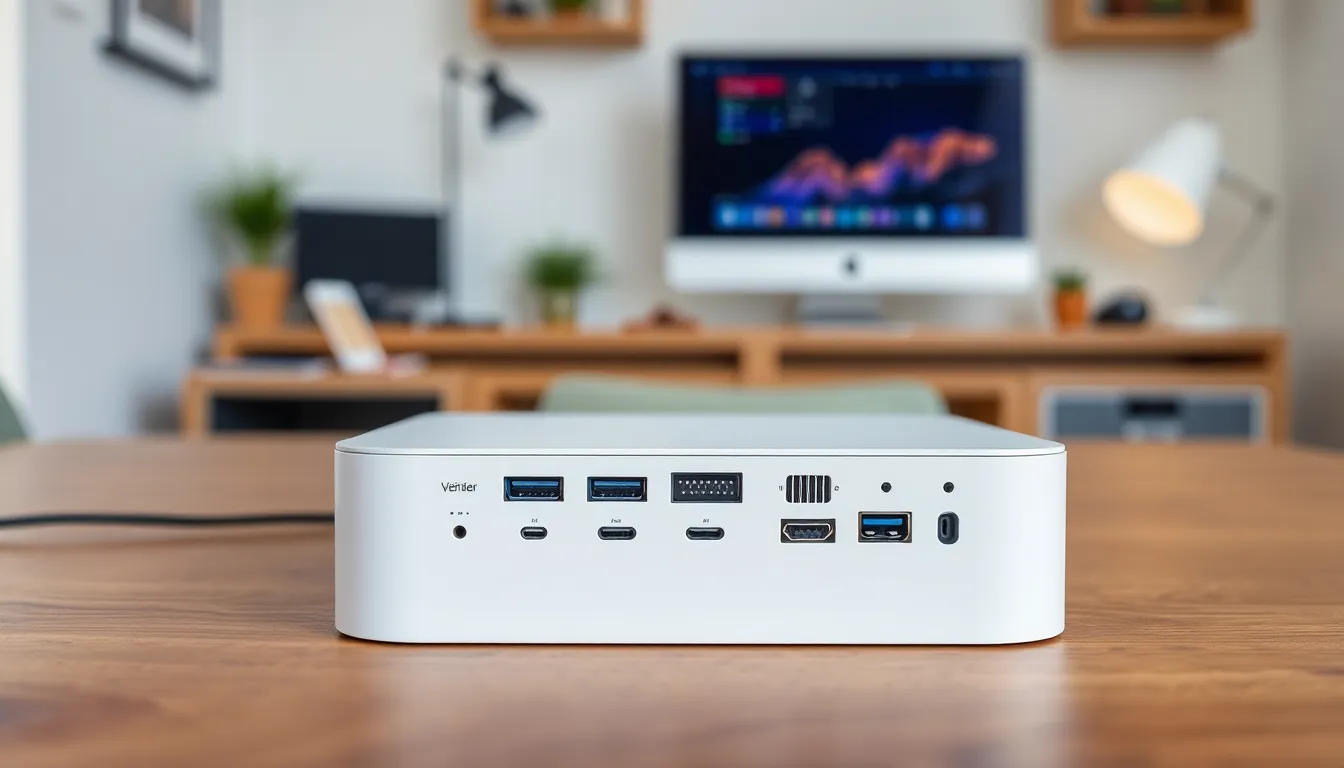The Internet of Things (IoT) has transformed everyday life, connecting devices in ways that enhance convenience and efficiency. However, this connectivity comes with a significant downside: security vulnerabilities. As homes and businesses increasingly rely on smart devices, the risk of cyberattacks grows, making IoT device security more critical than ever.
With millions of devices now online, hackers are constantly looking for weaknesses to exploit. From smart thermostats to security cameras, every connected device can serve as an entry point for cybercriminals. Understanding the importance of robust security measures is essential for anyone relying on IoT technology. In this article, we’ll explore the key challenges in IoT device security and offer practical solutions to safeguard these vital tools in our modern lives.
Table of Contents
ToggleUnderstanding IoT Device Security
IoT device security encompasses the strategies and techniques utilized to protect Internet of Things devices from unauthorized access, attacks, and misuse. This aspect of cybersecurity has become increasingly crucial as the number of connected devices continues to rise.
Definition of IoT Device Security
IoT device security refers to the measures implemented to safeguard IoT devices and their networks. These devices include everything from smart home gadgets to industrial sensors. Effective security involves protecting data integrity, user privacy, and overall system functionality against threats. Employing encryption protocols, authentication mechanisms, and regular software updates contributes to a robust security framework.
Importance of IoT Device Security
IoT device security is vital for multiple reasons:
- Data Protection: Secure devices ensure that sensitive information, such as personal details and financial transactions, remains confidential.
- System Integrity: Protecting devices from tampering helps maintain operational reliability and performance, reducing downtime and service interruptions.
- User Trust: Strong security measures foster user confidence in devices and their manufacturers, encouraging the adoption of smart technologies.
- Regulatory Compliance: Adhering to security standards and regulations is essential, particularly in industries such as healthcare and finance, where data breaches can lead to severe legal consequences.
- Prevention of Cyberattacks: Effective security frameworks mitigate the risk of attacks, thereby protecting both individual users and larger networks from potential harm.
Given the pervasive nature of IoT technology, prioritizing security measures is essential for ensuring a safe digital environment for all users.
Common Threats to IoT Devices

IoT devices face various security threats that can compromise their functionality and the data they handle. Understanding these threats helps in developing effective security strategies.
Malware and Ransomware
Malware specifically targets IoT devices, disrupting their functionality and potentially gaining unauthorized access to networks. Ransomware attacks encrypt data on a device, demanding payment for decryption. These attacks exploit vulnerabilities in device firmware, enabling attackers to infiltrate systems without detection.
Examples of malware affecting IoT devices include Mirai, which turns devices into a botnet for launching Distributed Denial of Service (DDoS) attacks. Addressing the malware threat involves enforcing stringent security protocols and implementing regular software updates to patch known vulnerabilities.
Unauthorized Access and Control
Unauthorized access occurs when attackers exploit weak authentication methods to gain control over IoT devices. This often results from default passwords remaining unchanged or insufficient encryption practices. Attackers can manipulate devices for malicious purposes, such as spying, information theft, or creating botnets.
For instance, unsecured cameras can provide live feeds to unauthorized users. Effective measures against unauthorized access include implementing strong password policies, multi-factor authentication, and continuous monitoring of device activity to detect suspicious behavior promptly.
Best Practices for Securing IoT Devices
Securing IoT devices requires implementing effective strategies to minimize risks. The following best practices enhance the safety and integrity of these valuable tools.
Strong Passwords and Authentication
Strong passwords play a crucial role in securing IoT devices. Users must create complex passwords that contain a mix of upper and lower case letters, numbers, and symbols. Passwords should exceed eight characters to increase security.
Authentication mechanisms enhance protection further. Multi-factor authentication (MFA) adds an essential layer by requiring additional verification methods, such as text messages or biometrics. This significantly reduces the likelihood of unauthorized access, as attackers face more challenges in breaching accounts.
Regular Software Updates
Regular software updates ensure IoT devices remain secure against evolving threats. Manufacturers often release patches to address vulnerabilities; users should install these updates promptly. Delaying or ignoring updates can leave devices exposed to cybersecurity risks.
Automating updates can simplify this process, allowing devices to receive necessary security fixes without user intervention. Additionally, users should check vendors’ security advisories regularly to stay informed about potential threats and recommended actions.
Future Trends in IoT Device Security
Emerging trends in IoT device security indicate a proactive approach to combatting evolving threats. As the landscape of cyber risks changes, security measures must also adapt to protect sensitive data and device functionality.
Enhanced Cryptography Techniques
Enhanced cryptography techniques play a vital role in securing IoT devices. New algorithms are emerging that provide robust encryption for data transmitted between devices. Implementations such as quantum-resistant algorithms are gaining traction, offering greater resilience against future computational threats. Additionally, lightweight cryptography methods ensure even low-power devices can utilize secure protocols without compromising performance. Regularly updating cryptographic standards remains essential to counter potential vulnerabilities.
AI and Machine Learning in Security
AI and machine learning significantly reshape IoT device security frameworks. These technologies analyze patterns and detect anomalies in real-time, allowing for quicker identification of potential threats. Machine learning algorithms can adapt to evolving attack vectors, improving the detection rate of unusual behaviors associated with cyberattacks. Moreover, predictive analytics combined with AI can facilitate proactive measures, such as automated responses to recognized threats, contributing to overall system integrity and user safety.
As IoT devices continue to permeate everyday life the importance of security cannot be overstated. Users must adopt a proactive stance to protect their devices and data from increasingly sophisticated threats. Implementing strong passwords multi-factor authentication and regular software updates are essential steps toward safeguarding personal and sensitive information.
The future of IoT security looks promising with advancements in cryptography and the integration of AI. These innovations will play a crucial role in enhancing security measures and ensuring that users can enjoy the benefits of connected devices without compromising their safety. Prioritizing IoT device security is not just a necessity but a responsibility in today’s digital landscape.






